Zofia Zierhofferowa
Poznań
Names of Olęder settlements in Wielkopolska. Origins and changes
Based on the research carried out by historians, it is commonly known that the Dutch settlement in Poland began in the second half of the 16th century in the Gdańsk region and proceeded gradually along both banks of the Vistula river. In 1624, the colonization reached Saska Kępa, located in present-day Warsaw, and then kept moving southward, however, the penetration of these regions was poorer. In Wielkopolska region, the first Dutch settlement, Olędry Ujskie was founded in 1597, two subsequent ones Herbardowo and Folsztyn were established in 1601 in Ziemia Wieleńska. In the 17th century, the progress of the colonization process was still slow and its acceleration did not occur until the 18th century. Generally, the Ductch colonization considerably increased the number of villages in our region. However, the number of villages is uncertain due to the incompleteness of source materials. Besides, not all initiated settlement foundations were successful, which additionally makes their cataloguing difficult. W. Rusiński maintains that there were ca. 550[1] settlements, whereas, the recent studies of Z. Chodyła increased their numbers to 700[2] .
The majority of settlement names were characterized by two segments and included names (H)olendry or Olędry. Large part of these names alluded to earlier toponyms. I will begin my discussion from these toponyms. In Wielkopolska, toponymic names occurred already in the 13th century documents, and they became more common in the 15th century. Here, I would like to make a reference to my monograph "Nazwy typu Osiek Mały, Koźminek et al. derywowane od nazw miejscowych (Name types Osiek Mały, Koźminek et al. derived from local names)" [3] . I will illustrate the process of toponymic name creation by an example from the cited work. The name of the village of Gałązki began to function as the name of two settlements, which were established either by dividing one earlier village into two separate units or by founding a new settlement in the immediate proximity of the original village. The new village adopted the name of the original one and, in order to avoid confusion, the common name Gałązki was modified by the addition of the segment Małe or Wielkie, for reasons of symmetry. Thus, segments Mały and Wielki functioned as differentiating segments of common segment Gałązki[4] .
This category of toponymic names includes the names of the Olęder settlements with an identifying segment, which was a name of an earlier village, which included wastelands handed over to new settlers to be transformed into farmland. This name dependency was a result of the ownership relationships, which is demonstrated by the following examples: Hollendrv Chociszewskie... belong to the village of Chociszewo, 1789 Mkl, present day Chociszewko, pozn., gm. Skoki, Olędry Lubieckie, the village of Lubiecz, 1789, Olędry that belong to the village of Lubcza, 1789 Mkl, present-day Lubczynek, bydg., gm. Rogowo. This name type was characteristic and representative for the Olęder colonization in the 17th and 18th centuries. The following examples illustrate this process:
- Borkowskie Olędry 1750, forest., Rus 124 (: Borek); Borkowskie Olędry, Ger. Borek -Hauland Myc 142; Borkowice Sk X 97; Borkowice, pozn., gm. Mosina WUN I.
- Borujskie Stare Olędry 1705?, Rus 125 (: Boruja); Boruja Stara, Ger. Alt Borui Sk X 115; Boruja, ziel., gm. Siedlec WUN I.
- Chełmskie Olędry 1732, forest, Rus 132 (: Chełmno); Chełminko, Ger. Chełmno Haulang Sk X 85; Chełminko, pozn., gm. Duszniki WUN I.
- Chromieckie Olędry 1748, forest, Rus 125 (: Chromiec); Chromiec Sk X 26; Chromiec, pozn., gm. Nowe Miasto n. Wartą WUN I.
- Chrzastowskie Olędry 1747, forest, Rus 125 (: Chrząstowo); Chrząstowskie Huby, Ger. Chrzonstowo Hld Myc 142; Olsze Sk X 99; Olsza, pozn., gm. Śrem WUN II.
- Dłuskie Stare Olędry 1668, forest, Rus 133 (: Stare Dłusko); Stare Dłusko, Ger. Altlauske Rosp 306; Stare Dłusko, gorz., gm. Przytoczna WUN III.
- Jaromierskie Stare Olędry 1709, thickets, Rus 126 (: Jaromierz); Stary Jaromierz, Ger. Alt Hauland (Alt Jaromierz) Rosp 308; Stary Jaromierz, ziel., gm. Kargowa WUN III.
- Jaromierskie Nowe Olędry 1719, forest, Rus 126 (: Jaromierz); Neu Jaromierz, Ger. Neu Hauland (Neu Jaromierz) Rosp 215; Nowy Jaromierz, ziel., gm. Kargowa WUN III.
- Jędrzejewskie Olędry 1763 Rus 134 (: Jędrzejewo); Jędrzejewskie Olędry, Ger. Putzig Hauland WM I 15; Gajewo, Ger. Putzighauland Rosp 70; Gajewo, pil., gm. Czarnków WUN I.
- Komorowskie Olędry 1707, forest, Rus 135 (: Komorowo); Komorowice, Ger. Komorowo Hauland Sk X 53; Komorowice, pozn., gm. Lwówek WUN II.
- Konarskie Olędry 1735, forest, Rus 126 (: Konarskie); Konarskie Huby, Ger. Konarskie Hld Myc 143; Konarzyce, Ger. Friedrichsburg Sk X 98; Konarzyce, pozn., gm. Książ Wlkp. WUN II.
- Króteckie Olędry 1727, forest, Rus 143 (: Krotecz, dziś Krucz), Kruteczek, Ger. Krutschhauland Sk XI; Kruteczek, pil., gm. Lubasz WUN II.
- Lewickie Olędry 1732, forest, Rus 135 (: Lewice); Lewiczynek, Ger. Lewitz Hauland Sk X 53; Lewiczynek, gorz., gm. Miedzichowo WUN II.
- Teressowo or Ludomskie Olędry 1748 Rus 141 (: Ludomy, Ludomie); Ludomicko, Ger. Ludom Hauland Sk X 56, 59; Ludomicko, pil., gm. Ryczywół WUN II.
- Nieszawskie Olędry 1723, forest, Rus 137 (: Nieszawa, Mieszewo); Nieszawka, Ger. Nieschawa Hauland Sk X 57; Nieszawka, pozn., gm. Murowana Goślina WUN II.
- Oberskie Stare Olędry 1713 Rus 128 (: Obra); Obra Dolna, Ger. Alt Obra Hauland Rosp 218; Obra Dolna, ziel., gm. Kargowa WUN II.
- Oberskie Nowe Olędry ca. 1762 Rus 128 (: Obra); Obra Nowa, Ger. Neu Obra Hauland Sk X 116; Nowa Obra, ziel., gm. Wolsztyn WUN II.
- Połajewskie Olędry ca. 1760 Rus 138 (: Połajewo); Połajewo, Ger. Polajewo Hld Myc 97; Połajewice, Ger. Polajewo Hauland Sk X 57; Połajewice, pil., gm. Ryczywół WUN III.
- Różyńskie Olędry 1765, forest, Rus 139 (: Róża); Róża Nowa, Ger. Neu Rose Sk X 53; Nowa Róża, pozn., gm. Nowy Tomyśl WUN II.
- Słocińskie Olędry b.d. Rus 129 (: Słocin, Sulecino); Słociniec, Ger. Slocin Hauland Sk X 20; Słociniec, pozn., gm. Grodzisk Wlkp. WUN III.
- Słonawskie Olędry 1700, forest, thicket, Rus 140 (: Słonawy, Słanowo); Słonawy Hl. Verz 182; Słonawy Sk X 57; Słonawy, pozn., gm. Oborniki WUN III.
- Starojastrzębskie Olędry 1710-1712 ? Rus 130 (: Jastrzebniki); Friedenhorst (Alt Jastrzembski) Verz 48; Jastrzębsko Stare, Ger. Friedenhorst Sk X 53; Jastrzębsko Stare, pozn., gm. Nowy Tomyśl WUN L
- Strychowskie Olędry 1686, forest. Rus 140 (: Strychy); Strychy, Ger. Striche Hld Myc 130; Stryszewo, Ger. Striche Hauland Rosp 315; Stryszewo, gorz., gm. Przytoczna WUN III.
- Ujskie Olędry 1597, thickets and marshes, Rus 141 (: Ujście, Uście): Ujskie Olędry Myc 171; Ługi Ujskie, Ger. Usch Hauland Rosp 177; Ługi Ujskie, pil., gm. Ujście WUN II.
- Włościejewskie Olędry 1783, forest, Rus 131 (: Włościejewki, Włościejewice); Włościejewice, Ger. Wlosciejewki Hauland Sk x 99; Włościejewice, pozn., gm. Książ Wlkp. WUN III.
- Żabińskie Olędry 1778 Rus 131 (: Żabno); Żabno Hl. Verz 227; Żabinko Sk X 100; Żabinko, pozn., gm. Mosina WUN III.
The above name structures were characteristic of the Olęder settlements, for which the name of the original village - the identifying segment - adopted adjectival form. The names directly alluded to analogous two-segment names Wól. These names appeared three centuries before the Olęders and were their prototypes. Here are the examples: de Wola et Orchowo (1369) 1446 KW no. 1617; Wola Rchowska 1391 Lek II no. 128, present-day Wólka Orchowska, koniń., gm. Orchowo; in Gosławska Wola 1384 KW no 1822 (n. of the village of Gosłowice), later Wola Łaszczewa 1565 ASK 13, 11 (n. of the settlement of Łaszcz), present-day Wola Łaszczowa, koniń., gm. Kazimierz Biskupi. Besides, foundation of settlements described as wola had many features that were characteristic of the Olęder colonization.
The Olęders also settled in sites of abandoned and overgrown villages with a purpose of developing their land. In this case, the village name was restored, and usually segment Olędry was added. It should also be mentioned that in some villages, which were inhabited at the time, the Olęders were settled on part of the ploughland. The village of Sroczewo is one of such examples: an Olęder settlement was established on a part of the village farmland. As a result, a mixed settlement was created; later, the original residents of the village were granted the Olęder charter and joined the Olęders' community. It was often the case that the original residents were granted the Olęder privileges (or some of them) and this improved their legal and economic situation. As demonstrated by the following examples, this group of names preserved its original nounal form and segment Olędry was added optionally.
- Bielawy Olędry 1747, village overgrown, Rus 132 (: Bielawy); Bielawy pod Wronkami Sk X 85; pozn., gm. Wronki WUN I.
- Borgowo 1785, the same village and residents plus manor, Rus 124 (: Borgowo); Borgowo Sk X 97; Borgowo, pozn., gm. Śrem WUN I.
- Bukowiec Olędry 1691, abandoned village, Rus 132 (: Bukowiec, Bukowce); Bukowce Sk X 45; Bukowiec, pozn., gm. Sieraków WUN I.
- Chmielinka 1776, village and manor with crops, Rus 132 (: Chmielinka); Chmielinko Sk X 52; Chmielinko, pozn., gm. Lwówek WUN I.
- Chorzepowa 1753, the same village and residents , Rus 133 (: Chorzepowa); Chorzępowo Sk X 45; Chorzepowo, pozn., gm. Sieraków WON I.
- Daleszyno 1765, serfs' lands, Rus 125 (: Daleszyno); Daleszyn Sk X 16; Daleszyn leszcz., gm. Gostyń WUN I.
- Goździno Olędry 1735, forest, Rus 126 (: Goździno, Guździno); Goździn Sk X 115; Goździn, pozn., gm. Rakoniewice WUN I.
- Kamionka Olędry before 1748, ploughland partially overgrown, Rus 134 (: Kamionka); Kamionka Sk X 8; Kamionka, piL, gm. Chodzież WUN II.
- Kawczvn Olędry 1741, abandoned village, Rus 126 (: Kawczvn); Kawczvn Sk X 35; Kawczyn, leszcz., gm. kościan WUN II.
- Kotusz Olędry 1729, village with buildings, Rus 127 (: Kotusz, Kotowsze); Kotusz Sk X 95,96; Kotusz, pozn., gm. Kamieniec WUN II.
- Krosna Olędry 1780, abandoned village, Rus 127 (: Krosna); Krosinko, Ger. Krosno Hauland Sk X 98; Krosinko, pozn., gm. Mosina WUN II.
- Meryń Stary 1695, thickets, Rus 136 (: Meryń, Mierzyn); Mierzyn, Ger. Alt Merine Sk X 46; Mierzvn, gorz., gm. Miedzychód WUN II.
- Meryń Nowy 1713, partially overgrown manor, Rus 136 (: Meryń, Mierzvn); Mierzvnek, Ger. Neumerine Sk X 46; Mierzynek, gorz., gm. Międzychód WUN II.
- Niwka Olędry 1776, village with buildings, Rus 137 (: Niwka): Niwka, pozn., gm. Puszczykowo WUN II.
- Popowo 1708, village with buildings, Rus 138 (: Popowo); Popowo Sk X 86; Popowo, pil, gm. Wronki WUN III.
- Rataje Olędry 1740, partially overgrown village, Rus 129 (: Rataje); Rataje Sk X 116, 117; Rataje, pozn., gm. Rakoniewice WUN III.
- Skrzydlewo 1785, the same village and residents, Rus 140 (: Skrzydlewo; Krzydłowo); Skrzydlewo Sk X 47; Skrzydlewo, gorz., gm. Międzychód WUN III.
- Świniary Olędry 1619 Rus 141 (: Świniary; Świnary); Świniarki, Ger. Schwienert Hau1and Rosp 333; Świniarki, gorz., gm. Skwierzyna WUN III.
- Ujście Stare 1712, the same village and residents, Rus 131 (: Ujście, Uście); Stare Uście, Ger. Alt Tepperbuden Rosp 307; Uście, ziel., gm. Kolsko WUN III.
- Uście Nowe 1719, the same village and residents, Rus 131 (: Ujście, Uście); Nowe Uście, Ger. Neu Tepperbuden Rosp 213; Uście, ziel., gm. Kolsko WUN III.
- Zamorze 1771, village with buildings, Rus 142 (: Zamorze); Zamorze, Sk X 87; Zamorze, pozn., gm. Pniewy WUN III.
Names of Olęder settlements were also created without any reference to earlier names of villages. In this case, accessible micro-toponyms (names of physiographic forms settled by the Olęders) were used. Some of those micro-toponyms were mentioned in historical sources. This collection of name forming structures was supplemented by appellatives associated with natural environment. It is hard to draw a border between these two lexical collections, which provided material for the described names. It can never be certain whether the permanent connection between a relevant appellative and a corresponding physiographic object existed but was not included in source materials, or if it was included, researchers overlooked it. Names associated with human activities are much more infrequent. Surnames, first names, and extremely rarely, names of villages were among name founding structures. However, in this case the usage of the village names was motivated by completely different reasons than in the case of the above toponymic names. This material will be presented in the following order:
1) names related to the natural environment;
2) names related to human activities; 3) names that originated from surnames, first names, and also local names.
1) Names related to the natural environment;
- Barłożne Olędry I i II b. d. Rus 124 (: n. of forest Barłożna 1513 SHGPn I 17 after barłóg (lair) - "a resting place of a wild animal, especially a bear"); Holendry Barłożne ca. 1791 SHGPn I 17; Barłożna Gościeszvńska, Barłożna Wolsztyńska Sk X 115; ziel., gm. Wolsztyn WUN I.
- Białe Olędry b.d. Rus 124 (: biały (white) - describing marshy areas and bogs); Biała Wieś, Ger. Weisshauland Sk X 19; Biała Wieś, pozn., gm. Grodzisk Wlkp. WUN I.
- Błonie Olędry or Żdżar b.d. Rus 124 (: błonie - "meadow, pasture"); Per Hollendros d. Błońskie seu Wzdarowskie 1750 Koz IV 44; Błońsko, Ger. Blumen Hauland Sk X 115; Błońsko, pozn., gm. Rakoniewice WUN I.
- Bystrek Olędry 1757 Rus 125 (: n. of river Bystrzyki 1593 koz III 543 or n. of lake Bystrzec); Bystrzek, Ger. Bystrzek Hauland Sk X 98; Bystrzek, pozn., gm. Śrem WUN I.
- Chojnickie Olędry b.d. Rus 125 (: chojnik - "pine thicket or forest"); Kunik Olędry, that is, Kunickie Olędry, Ger. Kuniken-Hauland SG IV 878; Chojnik, Ger. Kunik Sk X 52; Chojniki, pozn., gm. Nowy Tomyśl WUN I.
- Czarne Olędry b.d. Rus 125, XVI-XVIII w. (: czarny (black) - describing dark, that is, coniferous forest or dark soil); Czarnawieś, Ger. Schwarzhauland Sk X 19; Czarna Wieś, pozn., gm. Grodzisk Wlkp. WUN I.
- Dziewczastruga 1745, forest, Rus 133 (: n. of a forest with n. of a river Dziewczastruga, n. of a river probably originated from the fact that girls bleached canvas in its water); Dziewczastruga, Ger. Trockenhauland Sk X 56; Dziewcza Struga, pil., gm. Rogoźno WUN I.
- Glinki Olędry 1701, ready ploughland, Rus 133 (: glinka (clay) - "soil type"); Glinno Olędry, Ger. Glinau SG II 589; Glinno Sk X 53; pozn., gm. Nowy Tomyśl WUN I.
- Gogolice Olędry b.d. Rus 133 (: name of forest Gogolice 1568; name Gogolice possibly originated from gogolica - "duck species"); Gogolice Sk X 87; pil., gm. Wronki WUN I.
- Grabowiec or Nowina Olędry 1765, thickets, Rus 133 (: grabowiec - "hornbeam forest"); Nowina Myc 174, Sk X 11; pil., gm. Lubasz WUN I.
- Igrzna 17461 Rus 134 (: n. of forest Wielkie Igrzvny 1630 Koz II 239 from igrzyna - "animal playground in a forest"); Igrzyna, Ger. Rehwiese Sk X 56; Igrzyna, pil., gm. Ryczywół WUN I.
- Jasionowe Olędry 1701, forest, Rus 134 (: jasionowy- "pertaining to an ash tree"); Jasienickie Olędry, Ger. Eschenwalde Myc 87; Jasieniec, Ger. Eschenwalde Rosp 104; Jasieniec, gorz., gm. Trzciel WUN I.
- Krynica Olędry b.d. Rus 135, Krynica przys. 1764 Koz II 359 (: language related n. Krynica, Skrzynice 1531 koz III 205 from krynica, skrzynica - "water spring"); Krynica Myc 129; Skrzynice, Ger. Warthetal (Krinitz) Rosp 294; Skrzynica, gorz., gm. Skwierzyna WUN III.
- Łęczne Olędry b.d. Rus 127 (: n. of forest Łęczen 1571 SHGPn III 20; łęk - "semicircularly shaped terrain") Lenczner Hol. Gilly; Łęczno, Ger. Lentschen Sk X 55, 53; Łęczno, gorz., Miedzichowo WUN II.
- Mechnacz Olędry 1784 Rus 136 (: n. of forest 1599-1600 with language related n. Mechnacz Koz II 450 from. mechnaty - "mossy"); Mechnacz Myc 83; Sk X 46; pozn., gm. Kwilcz WUN II.
- Orłowiec 1723, forest, Rus 138 (: n. of forest Orłowiec 1798 Koz II 552 from orłowiec - "place where eagles are present"); Orłowce Rosp 224; gorz., gm. Przytoczna WUN II.
- Piaski 1730, forest, Rus 138 (: piaski (sands) - "sandy soils"); Piaski, Ger. Neudorfer Sandkrug Rosp 235; no WUN, former pow. pilski.
- Rudka Olędry 1775, forest, Rus 139 (: n. of forest Rudka 1672 Koz III 150, n. of forest from rudka- "red colored bog from iron ore"); Rudka pod Pniewami, Ger. Rudki Hauland Sk X 86; Rudka, pozn., gm. Pniewy WUN III.
- Sosnowiec Olędry, b.d. Rus 129 (: n. of meadow Sosnowiec 1576 Koz III 234 from sosnowiec - "pine thickets"); Sosnowiec Hl. Verz 186; Sosnowiec Sk X 99; pozn., gm. Śrem WUN III.
- Sowiagóra Olędry 1702 Rus 140 (possibly: n. of forest Sowiagóra - "hill behind the forest with owls"); Sowia Góra Myc 84; Sk X 17, 18; gorz., gm. Międzychód WUN III.
- Sucha Dębina 1738, forest, thickets, Rus 130 (: sucha dębina (dry oak forest) - "oak forest without forest floor"); Sucha Dębina, nova Colonia 1777 Koz III 272; Wioseckie Huby, Ger. Wiosker Hld Myc 51; Wola Jabłońska, Ger. Wiosker Hauland Sk X 116;Wola Jabłońska, pozn., gm. Rakoniewice WUN III.
- Świętne Olędry b.d. Rus 130 (: n. of lake Święte Koz III 286 - "dedicated to Church"); Świetno, at the close of the 18th century Koz III 286; Świetno, wieś, Ger. Schwenten, lake Święte, Ger. Schwentensee Rosp 332; Świętno, ziel., gm. Wolsztyn WUN III.
- Tarnowiec b.d. Rus 141 (: n. of forest and marsh Tamowiec 1571 Koz III 316 ; tarnowiec - "a place overgrown with blackthorn"); Tarnowiec, Ger. Tarnowce Sk X 54; Tarnowiec, pozn., gm. Lwówek WUN III.
- Troszczyńskie Olędry b.d. Rus 131 (: n. of forest Troszczyna 1577-78 Koz III 326: Troszczyna - "a tree or a bush, which occurs in Poland on moist and fertile soils"); Troszczyn Sk X 20; pozn., gm. Opalenica WUN III.
- Wilcz Olędry ca. 1762 Rus 131 (: place Wilcz 1521 and n. of lake Wilcze Koz III 388 - from adjective lupine - wilczy); Wilcze, Ger. Wolfsheide (Wilze) Rosp 357; Wilcze, ziel., gm. Wolsztyn WUN III.
- Zdroje Olędry b.d. Rus 142 (: Zdrój); Zdroje, Ger. Dreien Sk X 86; Zdroje, pil., gm. Wronki WUN III.
- Zwierzyniec Olędry 1751, thickets, Rus 142 (: zwierzyniec - "fenced section of a forest where animals were kept for hunting"); Zwierzyniec Myc 84; Sk X 47; gorz., gm. Miedzychód WUN III.
Features of the natural environment, in which the Olęders founded their settlements, are noticeable in the names that were independent of the earlier toponyms. This is quite obvious, because these names were created after the Olęders encountered a place for a new settlement and before the subsequent inhabitants modified the original landscape. The names usually reflected the fact that the area was forested. This fact is illustrated by some of the cited examples and by other names that can be found in the complete material: Drzewce Olędry (: drzewce probably means "forest or thicket"), Kozielaski Olędry (: kozie laski (goat little forests) that is "small for goats"), Krzywoleśne Olędry (: crooked forest), Lasek Olędry. The names that describe forests with particular species of trees prevalent also belong to this group: Borownickie Olędry (: borownik - "coniferous forest"), Chojnickie Olędry, Dębowskie Olędry (: dębowiec - "oak forest"), Grabowiec Olędry, Jasionowe Olędry, Lipie Olędry (: linden tree), Olszewniak Olędry (: olszewniak - "alder thickets"), Sosnowiec Olędry, Tarnowiec, Troszczyńskie Olędry and others.
Animals are inseparable elements of a forest. Their presence is reflected in such names as: Barłożne Olędry, Igrzna, Orłowiec, Sowiagóra Olędry, Wilcz Olędry, Zwierzyniec Olędry, which initially referred to forests.
The Olęders colonized marshy and boggy areas. Name Białe Olędry is a clear example of this tendency. Marshes and bogs were often located near rivers and lakes. The names of these lakes or rivers were frequently transferred to forests, meadows, or marshes that surrounded them, and then after these areas were colonized by the Olęders, they became the names of their settlements. This tendency was reflected in the following names: Bystrek Olędry, Dziewczastruga, Gogolice Olędry, Krynica Olędry, Mechnacz Olędry, Pącheńskie Olędry (: n. of lake Pąchy from pąch - "smell, stench"), Rudna Olędry (: n. of river Rudna - from reddish coloring of the water - iron ore).
The described names also contain information about a soil type or landform features, for instance: Błonie Olędry, Glinki Olędry, Góry Olędry, Łęczne Olędry, Piaski Olędry.
2) Names associated with human activities:
- Cegielskie Olędry 1729 Rus 125 (: cegielnia (brickyard)); Cegielnia Ol. KsP 390; Cegielskie Olędry, Ger. Ziegelhauland Myc 49; Cegielsko, Ger. Ziegelhauland Sk X 115, Cegielsko, pozn., gm. Rakoniewice WUN I.
- Cegielskie Olędry 1740, forest, Rus 132 (: cegielnia(brickyard)); Cegielnickie Olędry, Ger. Ziegelscheune Myc 86; Prądówka, Ger. Ziegelscheune Sk X 53; Prądówka, gorz., gm. Miedzichowo WUN III.
- Mostowskie Olędry or Żdżar b.d. Rus 127 (: adj. mostowski: bridge); Mostowe Olędry Myc 52; Mościska, Ger. Bruckenhauland Sk X 115; Mościska, pozn., gm. Rakoniewice WUN II.
- Nowe Dwory Olędry 1601, forest, meadows, thickets Rus 137 (: nowe dwory (new manor houses)); Nowe Dwory 1640, 1654 Koz II 526; Nowe Dwory, Ger. Neuhöfen Rosp 212; Nowe Dwory, pil., gm. Wieleń WUN II.
- Nowe Olędry 1744, thickets, Rus 131; Neu-Tuchorze Hl. Verz 133; Tuchorza Nowa Sk X 116; Nowa Tuchorza, ziel., gm. Siedlec WUN II.
- Nowe Olędry b.d. Rus 128; Nowe Olędry, Ger. Neuvorwerk Myc 144; Nowinki, Ger. Neuhauland Sk X 99; Nowinki, pozn., gm. Mosina WUN II.
- Nowe Olędry 1746, thickets, Rus 137; Nowe Olędry, Ger. Eichquast, Łoskońskie Olędry, Ger. Neuhauland Myc 96; Neu-Laskon Hl. Verz 132; Nowołoskoniec, Ger. Eichquast Sk X 57, 59; Nowołoskoniec, pozn., gm. Oborniki WUN II.
- Nowy Dom b.d. Rus 137 (: nowy dom (new house)); Nowy Dwór, Ger. Neuhaus Myc 130; Nowy Dwór, Ger. Neuhaus Rosp 215; Nowy Dwór, gorz., gm. Skwierzyna WUN II.
- Piłka b.d. Rus 138 (: piłka (small saw) from piła - "tartak (sawmill)"); Pileckie Olędry, Ger. Pilker Hld Myc 97; Piłka, Ger. Pilkamühle Sk X 58; Piłka-Młyn, part of the village of Jaracz, pil., gm. Rogoźno WUN II.
- Stare Olędry 1703, thickets, forest, Rus 131; Ger. Alt-Tuchorze Hl. Verz 4; Tuchorza Stara Sk X 16; Stara Tuchorza, ziel., gm. Siedlec WUN III.
- Stodólsko Olędry 1742 Rus 130 (: stodoła (barn)); Colonia nova Stodolskie 1778 Koz III 254; Stodólsko Myc 51; Stodolsko Sk X 116; pozn., gm. Rakoniewice WUN III.
- Szklana Huta Olędry ok. 1739 Rus 140 (: szklana huta - "huta szkła (glassworks"); Wyszyńskie Olędry, Ger. Wischin Hauland WM I 42; Wyszynki, Ger. Wischinhauland Sk X 9: Wyszynki, pil., gm. Budzyń WUN III.
- Szklana Huta Olędry 1716, thickets, Rus 140 (: as above); Huta Szklana, Ger. Glashütte Rosp 97; Huta Szklana, pil., gm. Krzyż WUN I.
- Szklanohutskie Olędry 1720, thickets, Rus 140 (: as above); Huta Szklana, Ger. Glashütte Myc 87; Szklarka Trzcielska, Ger. Glashütte Sk X 54; Szklarka Trzcielska, gorz., gm. Miedzichowo WUN III.
The presented names reflect new residents' activities of on areas that were being developed. Names Nowe Olędry and Stare Olędry convey information regarding this type of colonization. Name Mostowskie Olędry inform about public works important for the communication; Nowe Dwory Olędry and Nowy Dom reflect construction of residential buildings, while Stodólsko, construction of a farming building. In order to establish a settlement, colonists needed various materials, which had to be manufactured in industrial plants: brickyards, glassworks, or sawmills. Development of this industry is documented by names: Cegielskie Olędry, Huta Olędry, Szklana Huta Olędry, Piłka.
3) Names that originated from surnames and first names:
- Albertowskie Olędry b.d. Rus 124 (: first name or surname Albert); Albertowskie Olędry Myc 90; Albertowsko Sk X 52; pozn., g. Grodzisk Wlkp. WUN I.
- Amtskasnerowskie Olędry b.d. Rus 124 (: surname Amtskasner); Amtskassner Hl. Verz 5; Toczeń, Ger. Amtskassner Sk X 54; Toczeń, gorz., gm. Miedzichowo WUN III.
- Bucharzewo Olędry 1722, thickets Rus 132 (: surname Bucharz); Bucharzewo Sk X 45; pozn., gm. Sieraków WUN I.
- Olszewniak or Chmielowo Olędry (: surname Chmielewski, Chmielewscy owned Ryczywół at the end of the 18th century SG X 82); Chmielewo Sk X 58; pil., gm. Ryczywół WUN I.
- Filipowo Olędry b.d. Rus 133 (: first name Filip, given to the son of Raczyński, who founded the settlement); the settlement was incorporated into the village of Wyszyny: Wischin Hl. Verz 219; Wyszynki, Ger. Wischin Hauland Sk X 9; Wyszynki, pil., gm. Buszyń WUN III.
- Grubskie Olędry b.d. Rus 126 (: name Gruba or Grube aor Grubski); Grubskie Olędry, Ger. Grubske Hauland SG II 859; Grubsko, Ger. Grubske Sk X 53; Grubsko, pozn., gm. Nowy Tomyśl WUN I.
- Herbardowo Olędry 1601 ?, marshes, Rus 134; Herbardowo, Ger. Herbersdorf 1654 Koz II 237 (: surname Herbard, Herburt, which was a family name of Zofia Czarnkowska, who was an initiator of introducing the Dutch): Erbardy KsP 450; Herburtowo, Ger. Ehrbardorf Rosp 97; Herburtowo, pil., gm. Wieleń WON I.
- Krystynka 1730, forest, thickets, Rus 135 (: first n. Krystyna); Krystynka, Ger. Christinchen Sk X 8; Krystynka, pil., gm. Chodież WUN II.
- Maryjanowo b.d. Rus 127 (: first n. Maryjan); Mariankowo, Ger. Marianowo Sk X 115; Mariankowo, ziel., gm. Siedlec WUN II.
- Maryjanowo Olędry 1614, thickets, meadows Rus 136; Marianowo, Ger. Mariendorf Rosp 183; Marianowo, pil., gm. Wieleń WUN II.
- Marienwald 1701 Rus 136 (: first n. Marie + Wald - "forest"); Marienwalde Myc 130; Gaj, Ger. Marienwalde KsP 259; Rosp 69; Gaj, gorz., gm. Przytoczna WUN I.
- Marlewo b.d. Rus 136 (: surname Marla a. Marlo); Marlewo Sk X 74; section of the town of Poznań WUN I.
- Marszewiec b.d. Rus 136 (: surname Marsz); Marszewiec, Ger. Marschewitz Sk X 59; Marszewiec, pozn., gm. Oborniki WUN II.
- Róża Olędry 1624 Rus 139 (possibly: heraldic n. Róża, less probably derived from a wild rose thicket) Poręba, Ger. Rosenthal Hauland Rosp 252; Poręba, gorz., gm. Przytoczna WUN III.
- Teressowo al. Ludomskie Olędry 1748 Rus 141 (: first n. Teresa) cf. Teressowo or Ludomskie Olędry p. 3.
- Władvszyn Olędry b.d. Rus 141 (: surname Władysz); Władyszyn Sk X 58; pol., gm. Rogoźno WUN III.
- Wvssogotowo or Czarne Olędry b.d. Rus 142 (founded by Wysogotó, that is Wyskotów Zakrzewskich Koz III 428); Wyssogotowo Myc 124; Wyssogotowo Sk X 77; pozn., gm. Tamowo Podgórne WUN III.
- Zakrzewo Olędry 1742, abandoned land, Rus 142 (founded before 1745 r. by Wyskotów Zakrzewskich [from Zakrzewo, leszcz., gm. Miejska Górka] Koz III 443); Zakrzewo, Ger. Sassenheim Sk X 77; Zakrzewo, pozn., gm. Dopiewo WUN III.
Name derived from a local name:
- Folsztyn ca. 1600, marshes? Rus 133, Fulsztyndorff Olendrowie 1654 Koz III 409 (: name of the town of Fulsztyn, przesent-day Wolsztyn, Zofia Czarnkowska, who settled the Dutch was from Fulsztyna); Fulsztyn, Ger. Follstein osp 69; Folsztyn, pil., gm. Wieleń WUN I.
The cited examples of names could have been of double origin. Surnames or first names, which provided basis for these names, for the most part belonged to landowners, but occasionally, they might have belonged to settlers. Finding the source information that would confirm these facts is very difficult. The information we have refers to only several situations and pertains to people whose given or family names were included in settlement names to commemorate them, for example Filipowo Olędry, Herbardowo Olędry, and Wyssogotowo Olędry. Names that resulted from back-derivation, such as: Chmielewo (: Chmielewski) and Zakrzewo (: Zakrzewski) are typical in this respect. It is probably a fair assumption that other names derived from first names, such as: Józefowo, Katarzynki, Krystynka, Maryjanowo, Marienwald, and Teresowo were also created in honour of people with these names.
Another example is name Folsztyn, which was created in order to commemorate a family hearth of Zofia Czarnkowsks, family name Herburt.
Next, I would like to concentrate on segments (H)olendry and Olędry, which with time changed its form, meaning, and function. Olędry is the most assimilated form in relation to the original sound of Holendry. As is known, this form is derived from the ethnic name Holendrzy (the Dutch). This ethnic group arrived in Poland and initiated a new form of colonization. The initial form Holendry is an old form of the plural accusative. This grammatical form is derived from nouns that describe various groups of people (nationalities: Czechy (Czechs), Węgry (Hungarians); occupations: Szewce (Cobblers), Sokolniki (Falconers); inhabitants of some area: Jezierzany) might have function as names indicating an area or a place inhabited by these people. In our case, Holendry is a place where Holendrzy (the Dutch) settled. In Polish areas, the Dutch introduced land draining techniques in order to develop bogs and marshes into farmland and raise cattle. With time, this type of colonization was continued by Germans, occasionally Czechs, and also Poles Their colonization activity usually began with clearing forests and thickets. As a result of the inflow of settlers of other nationalities, segment (H)olendry or Olędry lost its initial ethnic character.
In considering the two-segment names with toponymic segments in the form of adjectives derived from names of original villages, it was concluded that accompanying segment Olędry had a differentiating function (cf. p. 2, 4-5). In contrast, in other cited names, segment Olędry is not associated with the differentiating function. This situation is obvious in an area where settlements with the same sounding names do not occur. Considering the above, it is surprising that segment Olędry was consistently present in all name groups. Certainly, the reason for this phenomenon was a privileged position of settlements that were founded under the Olęder law. This charter provided for better social organization of a village community and favorable economic conditions for the village development in comparison to villages founded earlier under the German law. Common occurrence of segment Olędry should be explained by a need to confirm the legal status enjoyed by the Olęder settlements also through a village name. Thus, not only language related reasons, but also an intention to emphasize the legal status contributed to such a common usage of segment Olędry in village names.
When the Prussian government introduced uniform self-government of rural communities and regulated rural relations in accordance with the act from 1823, the Olęder law no longer applied. As a result, segment Olędry used as a proof of certain privileges lost its value and was only a proof of laws that were no longer binding. This fact was probably responsible for increasingly less frequent usage of segment Olędry in names in which it had no differentiating function. The appellation of this segment occurred simultaneously, that is, transfer from the proper names category to the common noun category. The Olęder settlements stand out from other villages because of their different cultivation methods, architecture, buildings, ethnical background and customs, and finally economic status. This aspect had an impact on the content of word Olędry, which comprised the above features.
Gradual changes in nomenclature of Olęder villages occurred already in the 19th century. I mentioned the elimination of segment Olędry, when its usage lost its legal motivation. Furthermore, identifying segments in the form of adjectives were transformed into noun forms probably under the influence of official German names in the territory annexed by Prussia, for example: Borkowskie Olędry, Ger. Borek Hauland. Segment Olędry or term olędry, which was introduced in its place, had a differentiating function until 1918.
After 1918, when Poland became an independent country, the local names, which were changed under the Prussian rule, and new German names underwent polonization. In Wielkopolska, the primary role in this campaign was played by a well-known historian, Rev. Stanisław Kozierowski. Toponymic segment Olędry and the colonization term olędry, which differentiated two the same sounding names that occurred next to each other or accompanied a name independently, were removed from the official lists. This practice was continued after 1945. The reason for this decision was that both segment Olęder and term olęder were recognized as undesirable because they corresponded to word Hauland; German researchers linked this word to verb hauen (clear forest), and therefore, were inclined to treat the entire Olęder colonization in Wielkopolska as a German colonization. I would like to mention that short form Holl., probably from Holländer, which occurs in the German source material cited by Gille.
New suffixal forms were introduced in place of segment Olędry and term olędry, which were removed from official lists, but survived in the language of the local residents. These forms were used earlier in order to differentiate names and since the 16th century were universally replacing two-segment forms, especially those containing segments Mały (Small) and Wielki (Big). These transformations were used as an example for naming Olęder settlements, which after 1918 adopted a suffixal form or other forms based on other name structures. Here are the examples: Białeżvńskie Olędry = Białegi, Borkowskie Olędry =Borkowice, Chełmskie Olędry = Chełminko, Chromieckie Olędry = Chromiec, Dłuskie Stare Olędry = Stare Dłusko, Konarskie Olędry = Konarzvce, Króteckie Olędry = Kruteczek, Lewickie Olędry = Lewiczynek, Ludomskie Olędry = Ludomicko, Oberskie Stare Olędry = Obra Dolna, Strychowskie Olędry =Strvszewo, Ujskie Olędry = Ługi Ujskie. It should be added that at times, the described names were replaced by forms that were not associated with former names, for example: Amtskasnerowskie Olędry = Toczeń, Chrzastowskie Olędry = Olsze, present day Olsza, Jedrzejowskie Olędry = Gajewo.
Finally, it is noteworthy that some names of Olęder settlements disappeared when these villages were combined with neighboring villages.
List of source abbreviations:
ASK 13 - Conscription records from Kaliskie province from 1. 1564-1591, Archiwum Skarbu Koronnego (Royal Treasury Archive) in Archiwum Główne Akt Dawnych (Main Office of Public Records) in Warsaw, sec. I, cat. no. 13.
Gilly - Special Karte von Südpreussen aus der Königlichen Grossen Topographischen Karte [...] reducirt und herausgegeben von Geheimen Bau-Rath Gilly, Berlin 1802-03, [1: 150000].
Koz II - III - S. Kozierowski, Badania nazw topograficznych dzisiejszej archidiecezji poznańskiej, Poznań 1916.
Koz IV - S. Kozierowski, Badania nazw topograficznych na obszarze dawnej zachodniej i środkowej Wielkopolski, Poznań 1921.
KsP - [L. Plater], Opisanie historyczno-statystyczne Wielkiego Księstwa Poznańskiego. Pub. J. Bobrowicz, Lipsk 1846.
KW - Diplomatic code of Wielkopolska [...] I-IV: pub. [I. Zakrzewski]; V; pub. F. Piekosiński, Poznań 1877-1908.
Lek - Die ältesten grosspolnischen Grodbücher. I - II. Hrsg. v. J. Lekszycki, Leipzig 1887-1889.
MKL - J. Majchrowski, Nazwy miejscowe dawnego województwa kaliskiego (manuscript).
Myc - J. Mycielski, księga adresowa wszystkich miejscowości w W[ielkim] Ks[ięstwie] Poznańskim. Completed by J. Mycielski, Poznań 1902.
Rosp - S. Rospond, Słownik nazw geograficznych Polski zachodniej i północnej, Warszawa 1951.
Rus - W. Rusiński, Osady tzw. "Olędrów" w dawnym woj. poznańskim, Poznań 1939 - Kraków 1947.
SG - Słownik geograficzny Królestwa polskiego i innych krajów słowiańskich. Edited by F. Sulimirskiego, B. Chlebowskiego, W. Walewskiego. I - XV, Warszawa 1880-1902.
SHG Pn - Słownik historyczno-geograficzny województwa poznańskiego w średniowieczu. Vol. I - II, b. 3, Wrocław 1982-1991; Vol. II, b. 4, Vol. III, Poznań 1992 and other.
Sk X - Index of towns and villages in the Republic of Poland based on results of the first national census from 31. 09. 1921; X: Poznański province, Warsaw ,1926.
Verz - Verzeichniss sämtlicher Ortschaften der Provinz Posen [...], Berlin 1883.
WM - [J. Lekszycki] Wykaz miejscowości, których nazwiska polskie do roku 1874 na niemieckie zmienione zostały. I-II, Poznań 1875.
WUN - List of official names of towns and villages in Poland. I - III, Warszawa 1980-1982.
Ilustrations
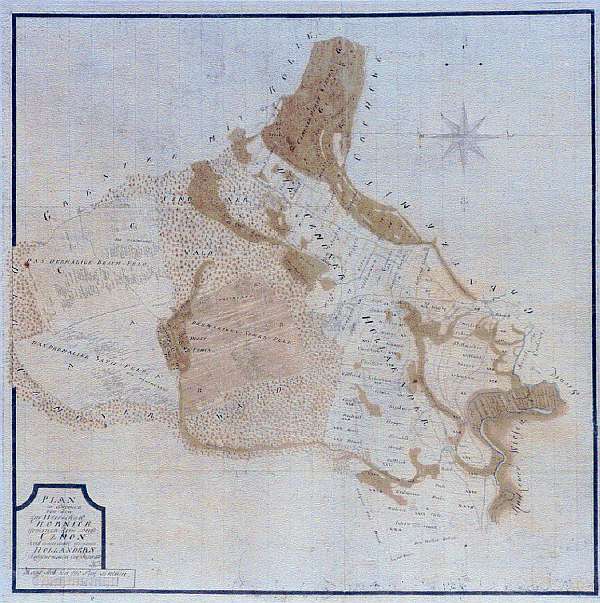
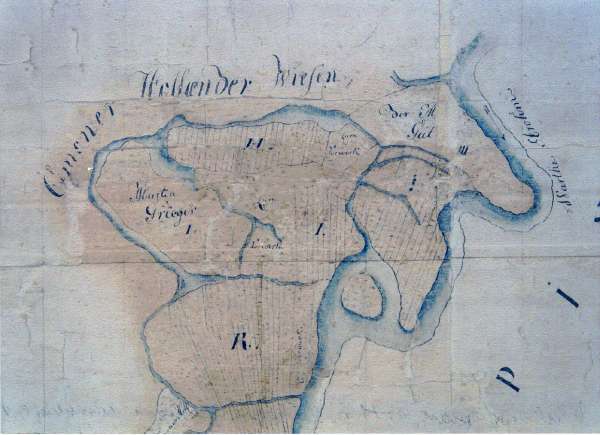
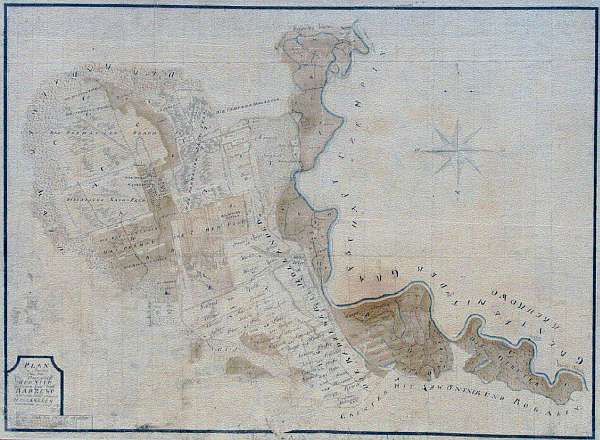

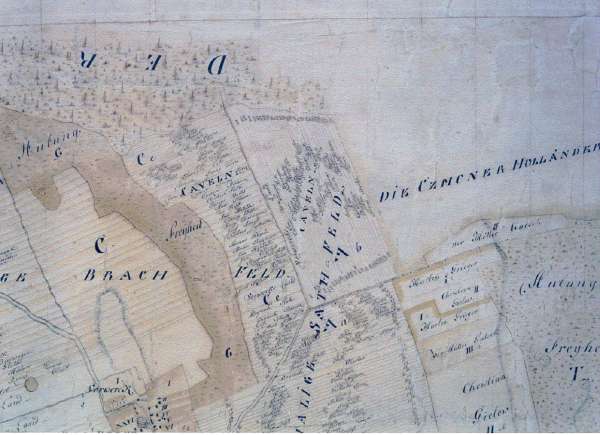

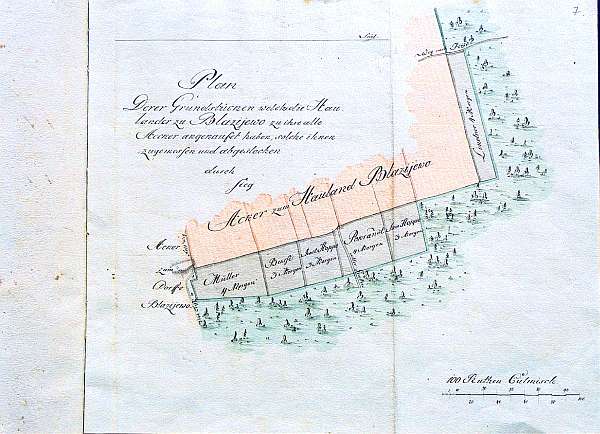
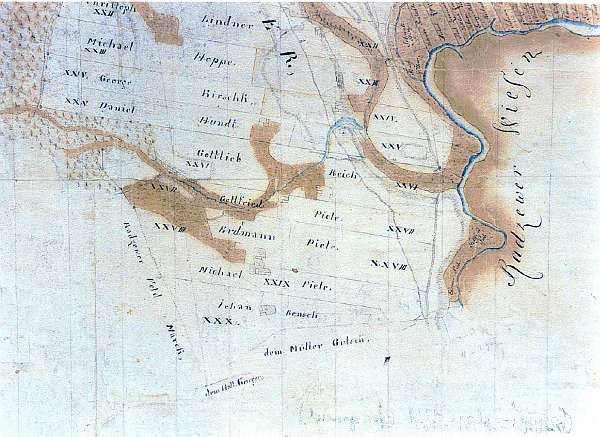

|








